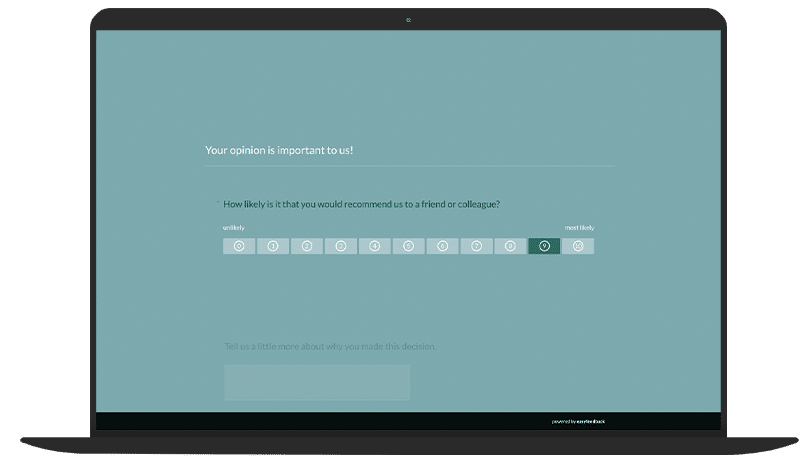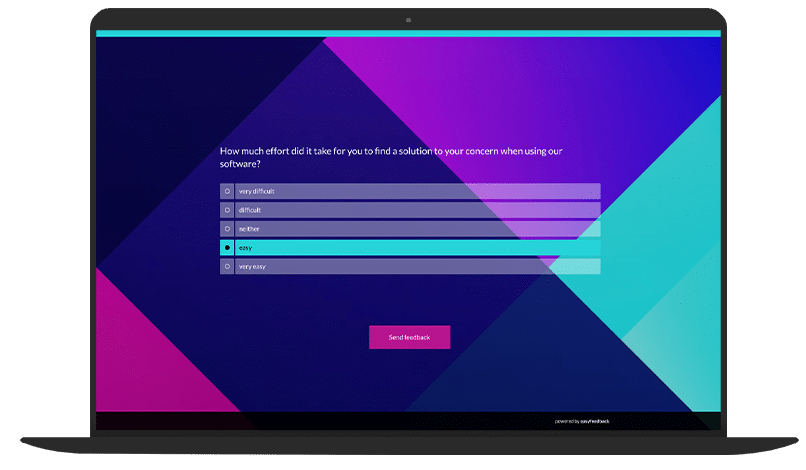What is a touchpoint and which are available?
Touchpoints are called touch points or contact points. As the name suggests, touchpoints denote the moments along the customer journey when the customer comes into contact with your company, your employees, your products or services.
In these few minutes or seconds, you or your company have to perform and give everything to be perceived positively as a brand.
Because these few moments show your potential customer whether what you promise is good enough. This is your acid test and in every touchpoint you have only one chance to arouse absolute desire, encourage your customers to buy, make them repeat offenders or incite them to tell others.
Each phase in the customer lifecycle has its own touchpoints. In total, there are about 221 touchpoints, according to a study on customer touchpoint management by “Esch/Absatzwirtschaft” on the occasion of DMEXCO 2016.
Of course, you cannot know every touchpoint and operate it optimally, but you should know the touchpoints that are most relevant for your business so that you can constantly optimize them.
To do this, you have to know and understand every single relevant touchpoint. Well known is the grouping of contact points with the acronym EPOMS:
- Earned Touchpoints:
Contact in the form of ratings, press reports, recommendations, etc. - Paid Touchpoints:
Contact in the form of ads, banner ads, Google Ads, TV and radio spots, posters, etc. - Owned Touchpoints:
Contact on website, company blog, in customer magazine, online store, company building, store, etc. - Managed Touchpoints:
Contact on Facebook, via apps in the external app store, via an external call center, at the trade fair stand etc. - Shared touchpoints:
Contact through field reports, explanatory videos, e-books, press articles, tweets, forum contributions, etc.
If you don’t serve these points of contact to your customer to the point, you run the risk of losing him. Betting on the wrong touchpoints also costs you money and time.
To know how well your customers feel they are being taken care of at these key touchpoints, get customer feedback at regular intervals at the various touchpoints along the Customer Journey.
Be outstanding at every touchpoint?
In the course of digitalization, we have more communication channels at our disposal than before. The options for customers to contact companies and find out about products and services are complex and diverse.
This makes it more difficult for companies to keep track of things:
- When does the first meeting with the customer take place?
- At what point does he really decide in favor of your offer?
- What does he need, and when, to make a decision for himself?
- How does the customer fare while using the product or service?
- What else does he need to recommend your company?
The most important task of all departments along the customer lifecycle is therefore to have control over the most important touchpoints.
It’s all about linking the right offers with the optimal usability at the right touch point, in the right phase of the customer lifecycle, to increase customer satisfaction through a great customer experience.
>> Video: 3 Customer Experience Touchpoints <<
Customer service comes first
Sounds exhausting, but it’s a challenge you have to master. Customer service should therefore be your first priority. The key: fast, cross-channel availability.
Because if you solve your customers’ problems quickly, customer satisfaction increases, which in turn increases customer loyalty and thus customer lifetime value grows – which is the goal of every company.
To identify the growth potential along the customer lifecycle, it is first important to understand the customer’s experience with your company, product or service.
A customer journey map, including touchpoints, illustrates these experiences.

Classifying touchpoints in the customer lifecycle
Touchpoints are not independent events, but a chain of events that a customer passes through during the customer lifecycle. But it is not as simple as it sounds.
Even though the phases of the customer lifecycle (awareness, consideration, purchase and retention) are always the same, customers encounter different touchpoints depending on the industry, product or service and customer preferences.
For a great customer experience, several departments need to work hand in hand – for example, when your marketing department hands over a qualified lead to your sales department to convert it into a buyer.

Define touchpoints
How do you now define the most important touchpoints for your business?
- Determine the necessary level of detail
First of all, you need to be clear about how detailed your touchpoints need to be defined. There is a formula for this: The more detailed, the more informative.
But you should always keep the purpose of your analysis in mind. Often it is sufficient to take a closer look at just a few touchpoints. - Define relevant touchpoints
To determine the relevant touchpoints, you look at the customer lifecycle that your customers usually go through.
This means from the first perception of your product or service, usually the website or a Google Ad, until the end, i.e. the repeated purchase or recommendation of your offer by your customer.
The relevance of the individual touchpoints varies from company to company. Also, the number is not the same. You have to find out for your company which are the most important touchpoints for the successful sale of your product or service.
Customer feedback as a basis for optimization
Customer surveys help you in this respect in two ways:
- On the one hand, you discover touchpoints that you didn’t even have on the screen.
- On the other hand, you can improve the performance of your touchpoints through customer feedback.
You can use different data and methods to do this:
- To begin with, external data from reports or studies on customer behavior are suitable. They provide a good overview of common points of contact in the industry.
- However, internal surveys and feedback are much more specific. You can also survey your employees to capture their experiences with customers.
- Customer surveys are the icing on the cake. Online customer surveys may tell you how your customers found your website or your phone number.
You can conduct surveys in two ways:
- Offline surveys in the form of personal interviews or telephone surveys. Of course, offline surveys are only inquired about, but not observed or tracked.
- Online surveys offer a data-based way to observe the behavior of your customers. Web analytics, social media monitoring, newsletter statistics or statistics on support requests are suitable for this. This way you can quickly find out which online channels you sell or convert best.
Customer satisfaction at relevant touchpoints is what counts
However, online analysis tools only provide you with answers to the question “at what points does my customer come into contact with the company and which ones seem to be particularly important?”
To find out how satisfied your customers are at these moments, you need to measure customer satisfaction at each online touchpoint.
That sounds easier than it is. It is very complex and expensive to measure satisfaction at each touch point. In addition, not every survey method fits every touchpoint.
Interview your customers
It is clear that you should interview your customers yourself and not just rely on the assessment of your employees. There are a variety of methods you can use to do this. You will get particularly high-quality results with qualitative interviews.
However, due to time and cost reasons, you can only conduct these interviews with a limited number of customers. The disadvantage: the sample may not be representative. According to the slogan “it’s the masses that do it”, quantitative surveys work – online, by phone or by mail.
Usually you use questionnaires for this purpose, meanwhile online customer surveys are common. They give you a great deal of creative leeway by combining text, images, sound and film.
The most important methods for customer surveys
The following is an overview of the most common methods and KPIs for capturing customer feedback. The methods are each suitable for different use cases, so it is important to understand the differences between the methods.
For customer satisfaction surveys the following methods and KPIs have proven to be useful:
Net Promoter Score (NPS)
A single question determines the satisfaction score of your customers:
“How likely is it that you would recommend the product/company/service XY to someone else and why?”
The respondent can answer on a scale from 0 to 10. The willingness to recommend results from the subtraction of the relative frequency of the promoters (10 and 9) and the critics (everything from 6 downwards).

In the context of touchpoints, you can, for example, use the NPS to query whether your users would recommend your newsletter or customer support.
The NPS can be easily and unobtrusively queried online on your website.

Net Promoter Score – the instrument for measuring the recommendation rate
Customer Satisfaction Score (CSAT)
The CSAT is another metric for customer satisfaction surveys. It does exactly what it should.
On a scale of e.g. 1 – 3, 1 – 5 or 1 – 10, it indicates customer satisfaction. The average score of all customers is the CSAT score.

Customer Effort Score (CES)
CES is about the effort a customer had to make to solve his problem. Usually, there are seven levels of effort, ranging from very little effort to very high effort. It is particularly suitable for service processes and contact points, such as hotlines, FAQs or complaints workflows.

Things Gone Wrong (TGW)
In the case of Things Gone Wrong, which originates from the Lean Six Sigma approach, the number of complaints gives an indication of how satisfied customers are. Reference values are 100, 1,000 or up to 1,000,000,000 units of products sold or services provided.
In the worst case, the value is 1 or higher, which means that you will receive at least one complaint per unit selected.
Social Media KPI/Social Sentiment
Online social media is a valuable source to find out how satisfied your customers are with your product or service. You don’t really need to start a survey here, although you can also use the easy-to-use survey tools, for example on Facebook.
But basically, all you need to do is keep an eye on your social media channels regularly to listen to your customers. Helpful tools are Google Alerts, Mention or Social Mentions Search.
Online surveys
Online surveys are used to obtain empirical data on problems, goals or needs of customers at the individual touchpoints. Advantages over offline surveys on paper are the filter guidance.
Example: The respondent only sees question D if he or she has entered a 5 in question A, for example. Online surveys also allow the adaptation of individualized questionnaire contents, question rotation or randomization, or the rotation of question blocks.
For example, you can use sliders, drag & drop or integrate images and videos. In addition to numerous advantages, such as cost savings or less influence by the interviewer, surveys that are created online can be realized much faster than telephone or on-site surveys.
The biggest advantage: The survey statistics are usually already visible in real time, so that you can optimize your touchpoints based on the insights gained.

Detect weak points in touchpoints
In order to identify possible weaknesses in your touchpoints, we recommend that you regularly collect feedback from your users and customers. It is important that you ask the right questions and choose the right feedback method.
It is important to know what the weaknesses of a touchpoint are, because touchpoints are interlinked and influence each other. For example, a post with the right hashtag and store link can trigger a conversion hype.
If there are too many negative evaluations on portals, the customer will already stop in the consultation phase. It is therefore important to keep up to date on the most relevant touchpoints with comprehensive monitoring and surveys – and in an emergency to counteract negative tendencies or customer experiences in a timely manner.
Conclusion: More customer satisfaction through targeted touchpoint optimization
If you have created your own touchpoint map, it is important to use it and optimize it using the recommended feedback methods. Maybe you integrate additional touchpoints at one point or another.
The goal: the highest possible customer satisfaction at every single touchpoint.
After all, your customer can interrupt their journey at any time. A small disappointment is often enough.
We hope we have inspired you with our tips on the topic of touchpoints to uncover possible gaps in your touchpoint map. If you close them, you are guaranteed to achieve higher customer satisfaction and a higher ROI.
Thank your customers for their feedback! Surprise them with a small gift and keep them up to date on what happened to their suggestion. Also ask the critics, apologize and solve the existing problems!




